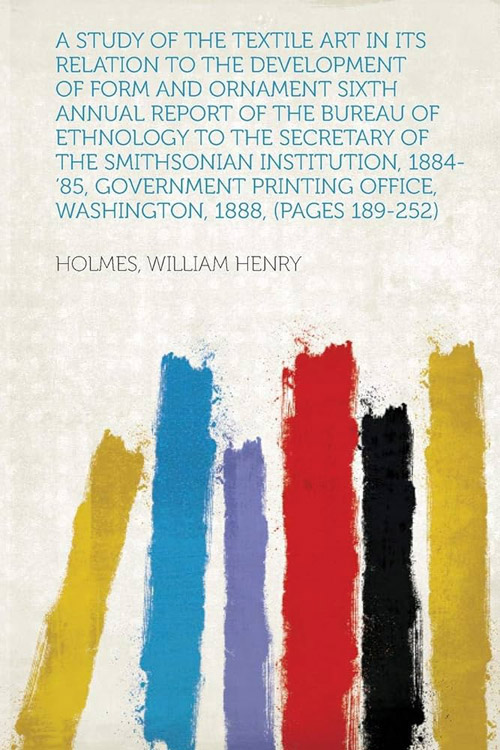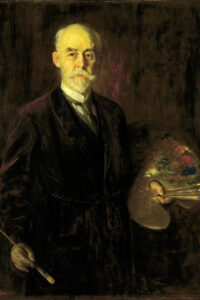
A Study of the Textile Art in its Relation to the Development of Form and Ornament
Colour is one of the most constant factors in man’s environment, and it is so strongly and persistently forced upon his attention, so valuable as a means of identification and distinction, that it necessarily receives a large share of consideration. It is probably one of the foremost objective agencies in forming and developing the esthetic sense. The natural colours of textile materials are enormously varied and form one of the chief attractions of the products of the art. The great interest in colour—the great importance attached to it—is attested by the very general use of dyes, through which additional variety and brilliance of effect are secured.
Colour employed in the art is not related to use, except perhaps in symbolic and superstitious matters, nor is it of consequence in construction. However, it derives importance from how construction causes it to be manifested to the eye. It finds its chief use in the design field, in making evident to the eye the figures with which art objects are embellished. Colour is employed or applied in two distinct ways: it is woven or worked into the fabric by using coloured filaments or parts, or it is added to the surface of the completed object using pencils, brushes, and dies. Its employment in the latter manner is incredibly convenient when complex ideographic or pictorial subjects are to be executed.
Read or download Book
William H. Holmes
William Henry Holmes (December 1, 1846 – April 20, 1933), known as W. H. Holmes, was an American explorer, anthropologist, archaeologist, artist, scientific illustrator, cartographer, mountain climber, geologist, museum curator, and director.
Biography.
William Henry Holmes was born on a farm near Cadiz, in Harrison County, Ohio, to Joseph and Mary Heberling Holmes on December 1, 1846. One of his forebears was the Rev. Obadiah Holmes, who emigrated to Salem, Massachusetts, in 1638. William Henry Holmes graduated from the McNeely Normal School, Hopedale, Ohio, in 1870 and briefly taught drawing, painting, natural history, and geology. 1889, the school awarded him an honorary A.B. (Bachelor of Arts) degree. Later, in 1918, Holmes received an honorary Doctor of Science degree from The George Washington University, Washington, D.C., for his work and achievements.
In 1871, he went to Washington, D.C., to study art under Theodore Kaufmann. His talent soon came to the attention of the scientists at the Smithsonian Institution. Fielding Bradford Meek and Holmes were employed to draw and sketch fossil shells and shells of live molluscs. In 1872, Holmes became an artist/topographer with the government survey of Ferdinand Vandeveer Hayden, replacing Thomas Moran. His first trip out West was to the newly established Yellowstone National Park.






